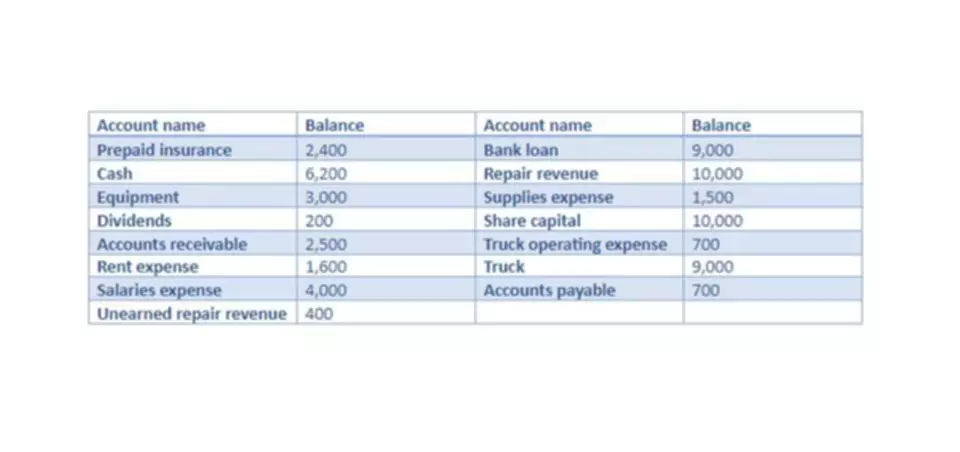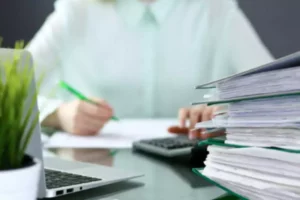Content

In addition, if you have a line of credit for your business, that will usually be listed as a current liability on your balance sheet. These are anything owned by the practice that could be sold or converted into cash within one year. In most cases, practices do not have enough tangible investment in inventory to merit its inclusion. In this case, inventory would include the cost of medication on hand to be sold. Short-term assets are your current assets, such as accounts receivable, cash and cash equivalents, and inventory your company will use within a year.
It clarifies the state of your business now; how you did before; how the near future looks for you; and perhaps some good changes to make moving forward. If you have investors and compliance obligations, it’s all the more important. If you have depreciating assets, you can properly claim tax deductions. And if selling the business is on the table, a balance sheet can provide an objective assessment of its worth.
tasks to complete before preparing a balance sheet
Companies will generally disclose what equivalents it includes in the footnotes to the balance sheet. Horizontal balance sheets use columns to compare data from different dates. Also known as comparative balance sheets, these financial reports show how numbers have changed in actual dollar amounts and percentages. Shareholder or owner equity is determined by any stock (common, preferred, or treasury), reserves, and retained earnings your company has. For these reasons, the equity section can be quite complicated for many organizations. QuickBooks’ balance sheet templates allow for all of the customizations you need to make to tailor it to your own business.

Once you’ve set a date, your next task is to list out all of your current asset items in separate line items. To make this section more actionable, it’s best to separate them in order of liquidity. More liquid items like cash and accounts receivable go first, whereas illiquid assets like inventory will go last. After listing a current asset, you’ll then need to include your non-current (long-term) ones.
Using Datarails to Perform Balance Sheet Forecasting
However, because the shares of large corporations are publicly traded, the computation is more complicated. A balance sheet indicates the entire amount entering and leaving a firm on a specific day known as the reporting date. Typically, the reporting date is the last day of the reporting period. Includes non-AP obligations that are due within one year’s time or within one operating cycle for the company (whichever is longest).

Next part, we look at the liabilities and shareholders’ equity part. The liabilities are again divided into current and long-term liabilities. The current liability is $1,500, and the long-term liability is $1,000, making the total liability $2,500. Coming now to the shareholder’s equity, the invested capital by the https://www.bookstime.com/ shareholder is $6,000, with retained earnings and other earnings amounting to $1,000. So now we see both equal assets and liabilities plus shareholder’s equity which amounts to $9,500. A balance sheet is important because it shows business owners and investors what a company owns and owes during a specific period.
Step 2: Add Your Assets
The image below is an example of a comparative balance sheet of Apple, Inc. This balance sheet compares the financial position of the company as of September 2020 to the financial position of the company from the year prior. With Ramp on your team, it’s easier to create a balance sheet and close your books faster. Check out Ramp’s capabilities today, and enhance your company’s finances. Potential investors like to know how well a company earns returns — it helps them decide whether an investment in a company will be profitable. Calculations like Return on Invested Capital (ROIC), Return on Equity (ROE), and Return on Assets (ROA) all require the information provided on the balance sheet to find the rate of return ratios.
Liabilities will either be close to assets or may even start to be larger than assets if your business is struggling. A bank statement is often used by parties outside of a company to gauge the company’s health. In this example, Apple’s total assets of $323.8 billion is segregated towards the top of the report. This asset section is broken into current assets and non-current assets, and each of these categories is broken into more specific accounts. A brief review of Apple’s assets shows that their cash on hand decreased, yet their non-current assets increased.
Should Balance Sheets Always Balance?
On the balance sheet, assets equal liabilities plus shareholders’ equity. You’ll want your balance sheet to include this calculation to provide insights into your financials. Investopedia defines an asset as “Anything of value that can be converted into cash.” In other words, an asset provides economic value to businesses and organizations. Arranging assets in the order of liquidity means putting assets that can be readily converted into cash at the top of the list and more permanent assets at the bottom. Current assets include assets that can be converted into cash as early as possible (typically within the next 12 months). Current asset accounts include cash, accounts receivable, and inventory.
One way to gain a better understanding of your business’s finances, is to organize them in a way that lets you quickly scan all of your business assets, liabilities and equity. Verify that the total for all assets shown in the balance sheet equals the total for all liability and stockholders’ equity accounts. The balance sheet is one of the three reports within the financial statements. The recommended approach to doing so is noted in the following steps. Before the advent of double-entry bookkeeping software, the balance sheet ensured the accuracy of a business’s bookkeeping. For example, if the balance sheet was out of balance — meaning assets weren’t equal to the combined value of liabilities and equity — then that indicated an error in the books.
Role of Balance Sheet
Thinking about hiring an accounting firm for help preparing your balance sheet? Browse our list of top accounting firms and learn more about their services in Capterra’s hiring guide. Noncurrent liabilities are obligations that will take more than the next 12 months to be repaid. After transactions are recorded and adjusted for in the general journal, they are transferred to appropriate sub-ledger accounts, such as sales, purchase, accounts receivable, inventory, and cash. Different accounting systems and ways of dealing with depreciation and inventories will also change the figures posted to a balance sheet. Because of this, managers have some ability to game the numbers to look more favorable.
What are the 5 elements of the accounting equation?
This equation contains three of the five so called “accounting elements”—assets, liabilities, equity. The remaining two elements, revenue and expenses, are still important (and you still need to track them) because they indicate how much money you are bringing in and how much you are spending.
Since the practice already has liabilities of $40,455, it can borrow an additional $193,452 ($233,907 minus $40,455) per FTE physician. Short-term notes payable, accounts payable, and accrued liabilities–current liabilities are the ones due within a year https://www.bookstime.com/articles/how-to-make-a-balance-sheet of the start date on your balance sheet. It shows you your financial strengths, weaknesses, and assumptions (both correct and incorrect). Properly done, a balance sheet reveals your company’s “book value,” or the net asset value of your business.
This account includes the total amount of long-term debt (excluding the current portion, if that account is present under current liabilities). This account is derived from the debt schedule, which outlines all of the company’s outstanding debt, the interest expense, and the principal repayment for every period. An important tool for financial analysis of your business, the balance sheet is one among many things to master as a small business owner. Being able to do so will give you a clearer picture of your business’s financial situation and enable you to make better financial decisions in the future. Creating a good and accurate balance sheet however isn’t just a matter of writing down a few monthly figures and projections.
- Having a comprehensive understanding of balance sheet forecasting is a major skill to hone when perfecting the craft of financial modeling.
- Thereby, it tells us what the company owns in the form of assets, what it owes to others in the form of liability, and finally, what the shareholder equity is or the amount invested by its shareholders.
- Being a snapshot, it captures the state of your business right now, so a balance sheet is always linked to a calendar date.
- It’s wise to carefully review your balance sheet before presenting it as part of your company’s financial statements.


